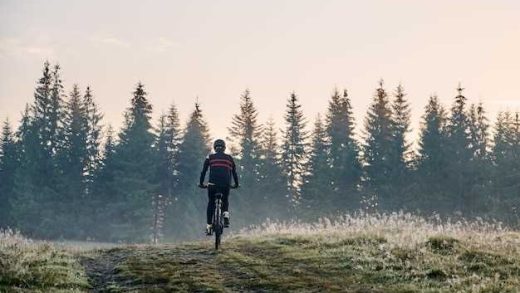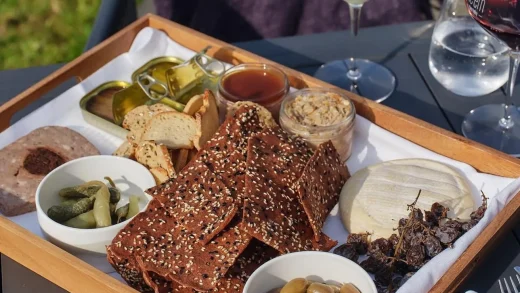Kakadu National Park in the Northern Territory of Australia is one of the most diverse and culturally significant places on earth. Famous for its natural environment, Kakadu is home to an amazing array of native wildlife that thrive in its many different habitats. From billabongs full of water lilies to tidal rivers and coastal waters, the park is a wild paradise. But this wild paradise also has some very dangerous animals that need to be treated with caution.
In this article, we’ll look at the wildlife of Kakadu National Park, including the ancient and deadly, and give you some safety tips so your visit is safe and enjoyable.
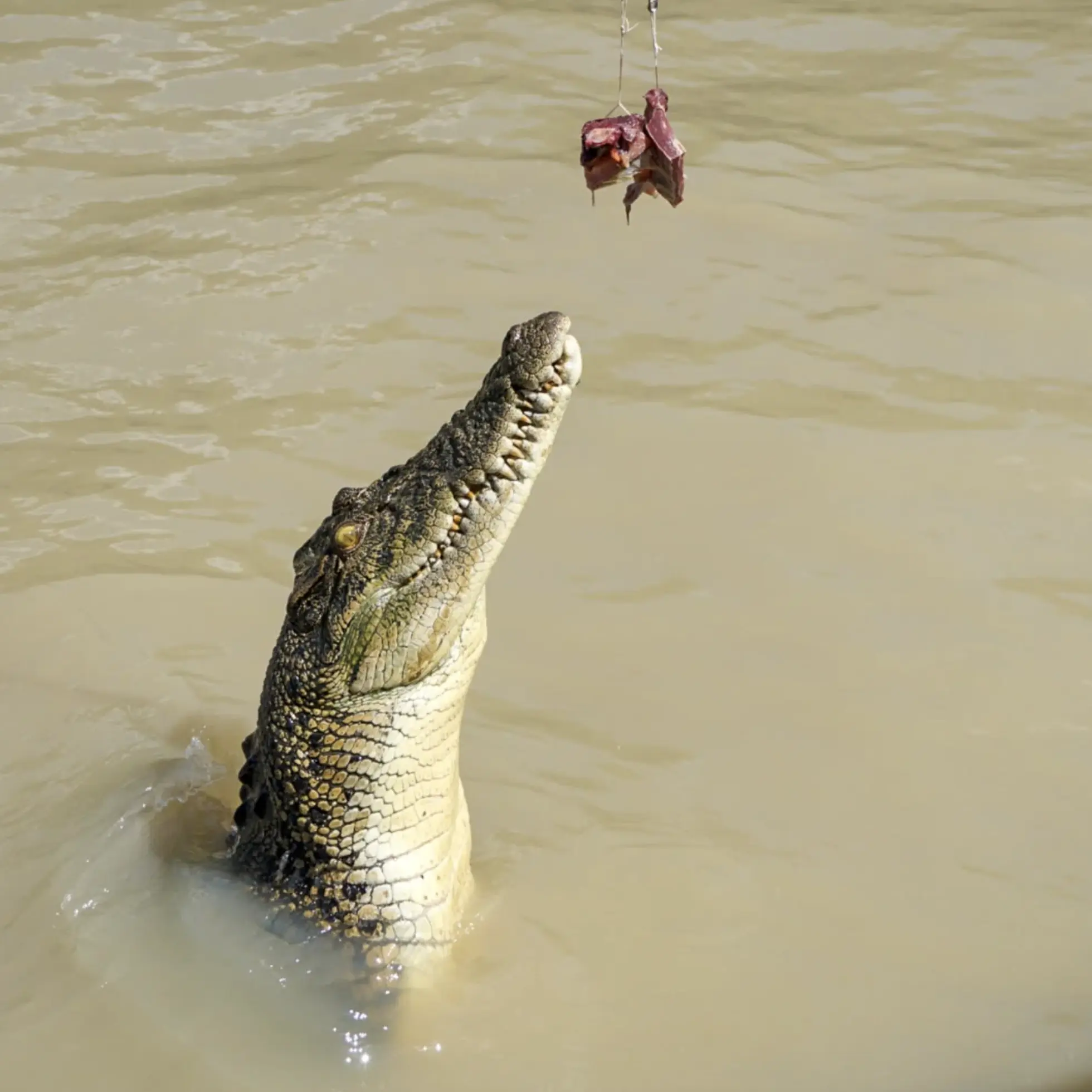
Saltwater Crocodiles: The Big Ones
Kakadu’s most famous animals are saltwater crocodiles, also known as “salties”. These ancient creatures are the top predators in the park and are an important part of the food chain. Saltwater crocodiles live in tidal rivers, freshwater billabongs and waterholes throughout Kakadu. During the wet season, they expand their territory, using the fast-flowing water and deep waterholes. In the dry season, they congregate in shrinking water bodies, so encounters are more likely.
Safety Tip: Always follow crocodile warning signs which are posted near water. Don’t enter unmarked shallow water or swim in areas known to be crocodile habitat. Park staff and park managers have strict crocodile management strategies in place to keep you safe, so listen to their advice.
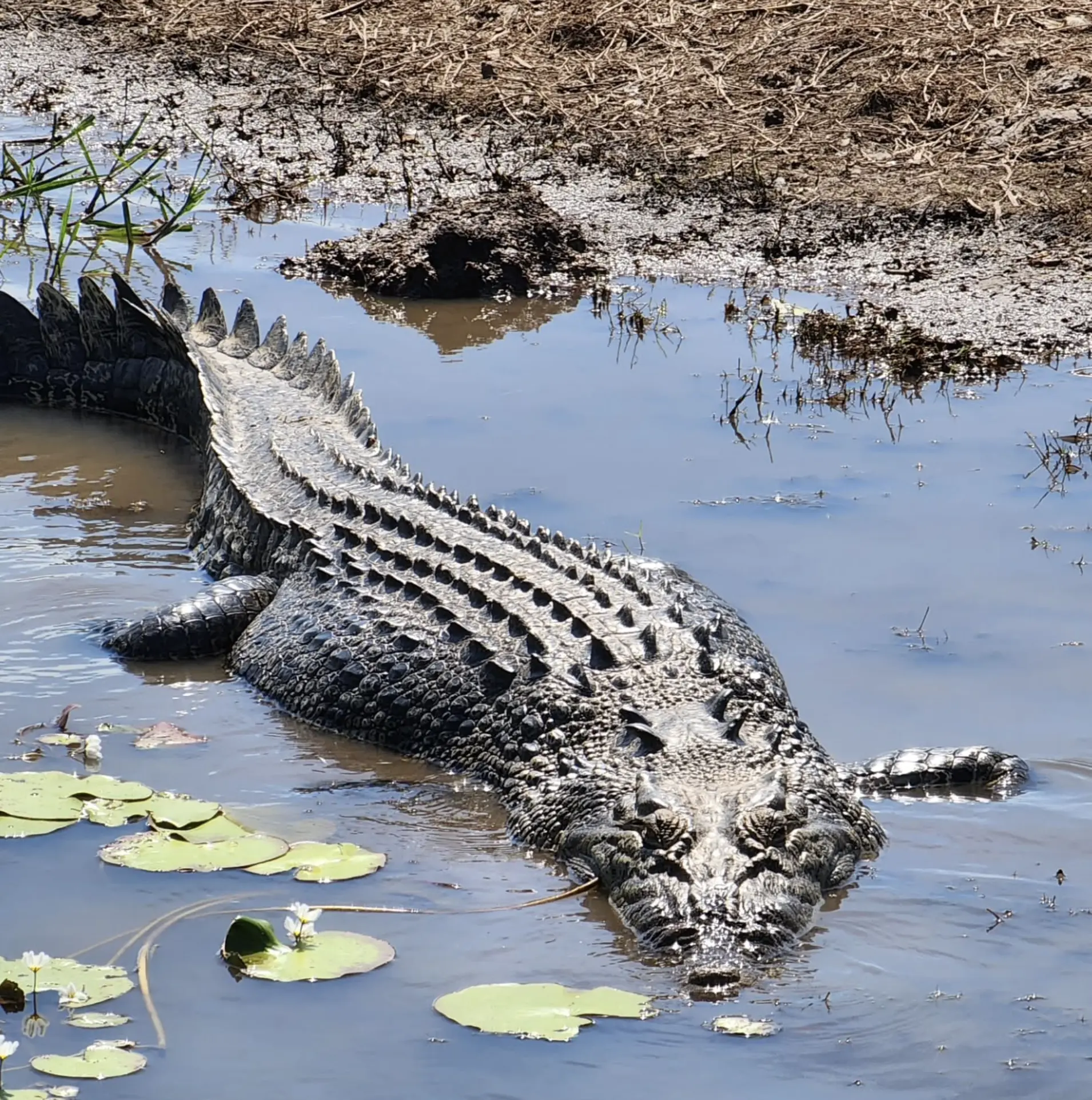
Freshwater Crocodiles: Less Aggressive but Still a Threat
Freshwater crocodiles, or “freshies”, are less aggressive than their saltwater cousins but can still be a threat if provoked. These native animals are often found in peaceful freshwater billabongs full of water lilies. Although they are more timid, freshwater crocodiles are an important part of the Kakadu ecosystem and help maintain the balance in their aquatic habitats.
Stay back. Don’t disturb. Guided 2 Day Kakadu Tours will get you up close without the risk.
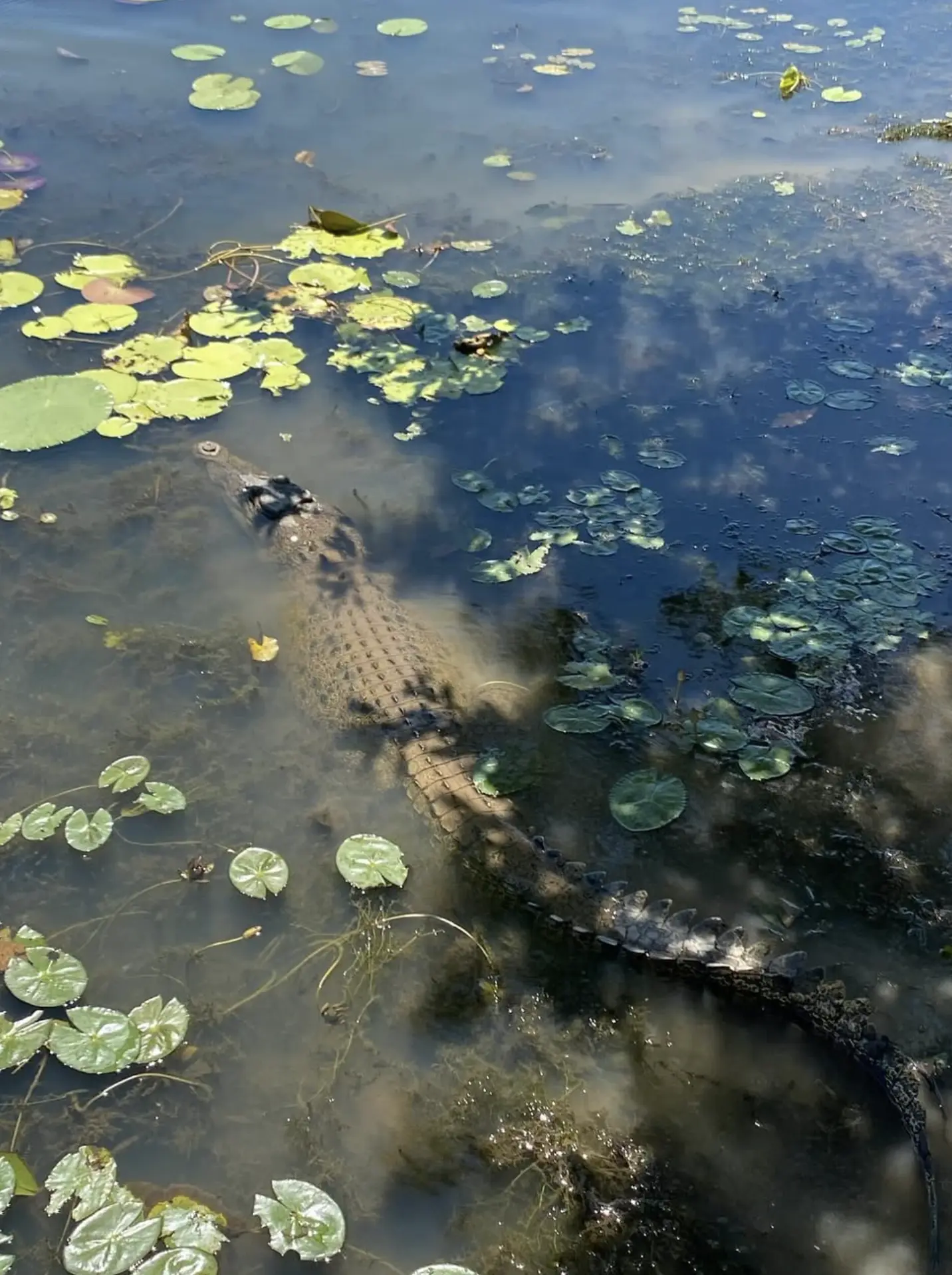
Venomous Snakes and Land Predators
Kakadu has venomous snakes including water python and death adder. These land predators are hiding in dense vegetation or near water. The wet season with monsoon rains and frog sounds is a feast for snakes as frogs come out to breed.
Safety Tip: Stay on marked trails, wear shoes, and be careful when walking through grass or forest. Don’t touch any reptiles.
Bull Sharks and Sea Creatures
Bull sharks are an apex predator that can be found in Kakadu’s tidal rivers and coastal waters. They can survive in saltwater and freshwater so are an adaptable and formidable presence in the park. Along with bull sharks, marine life such as turtles and other sea creatures add to the park’s biodiversity.
Safety Tip: Don’t swim in tidal rivers, fast currents or areas with poor water quality where bull sharks and other threats may be present.
Birds and Noisy Colonies
Kakadu is a bird lover’s heaven with over 280 species of birds including migratory, aquatic and endemic species like stork species. During breeding season noisy colonies form around wetlands where birds come to raise their young and find a mate. These areas are also home to dragon lizards and antilopine wallaroos and add to the park’s biodiversity.
Safety Tip: Bring binoculars to view birds from a distance and don’t disturb nesting sites.
Cane Toads: Invasive and Toxic Amphibians
Cane toads, an invasive species, have impacted Kakadu’s native predators like black wallaroos and arboreal lizards. These toxic amphibians have disrupted the food chain and have caused habitat loss for some species. Park managers and traditional owners are working to mitigate the many threats.
Safety Tip: Be aware of your impact on the park and follow park staff guidelines to minimize further disturbance.
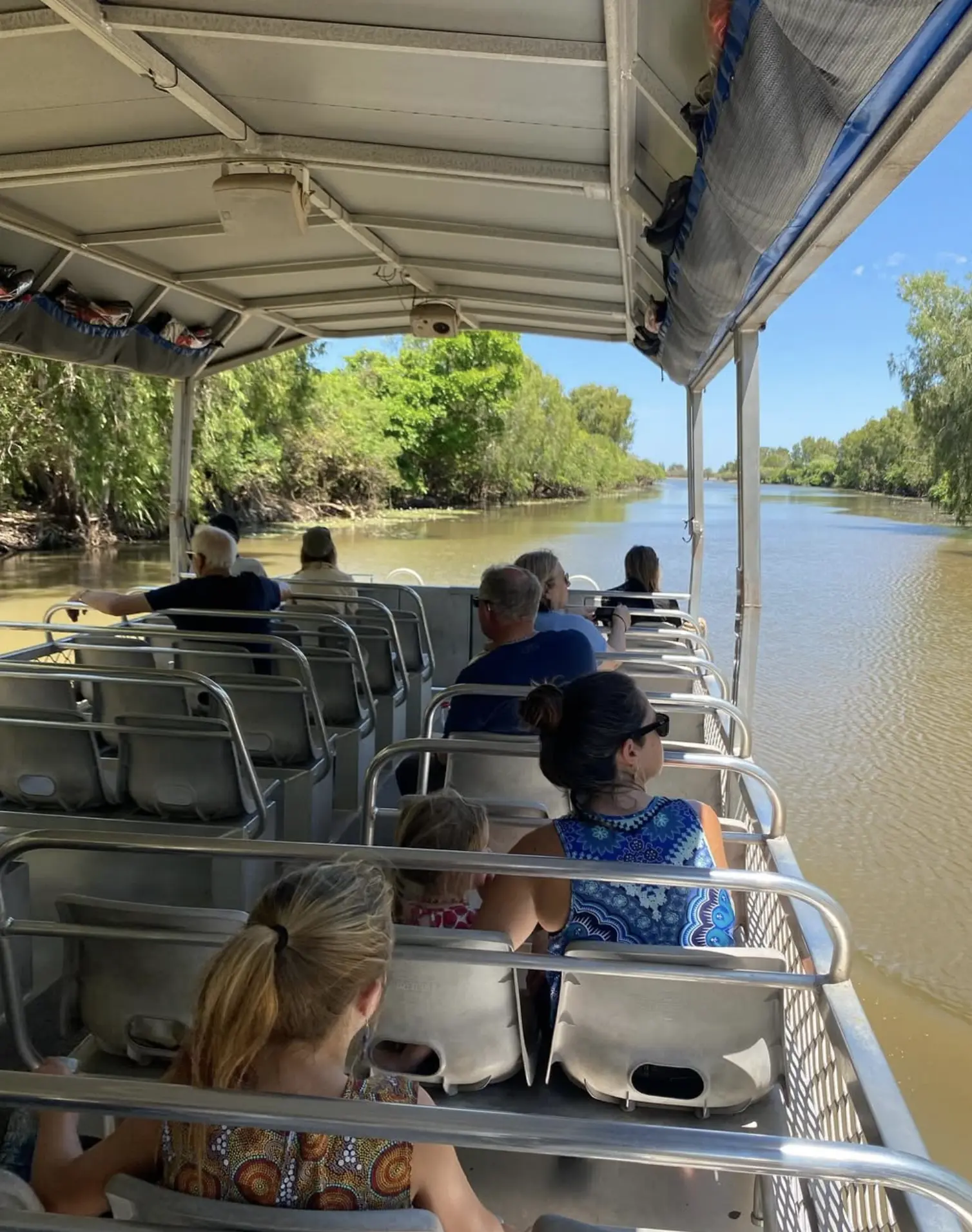
Seasonal Habitats
Kakadu’s habitats change greatly between the wet and dry seasons. In the wet season with rains, freshwater billabongs and tidal rivers fill up and provide aquatic habitats for species like native predators, frog species and marine creatures. In the dry season, water levels recede and wildlife congregate around permanent waterholes. Many animals from birds to aquatic habitats are tied to these seasonal changes.
Safety Tip: Plan your visit according to the season. The dry season is safer to access most areas, the wet season is when Kakadu is lush and migratory birds are present.
Kakadu with Wildlife Tours
To see Kakadu’s wildlife and learn about the old creatures book a 2 Day Kakadu Tours From Darwin with Wildlife Tours. Their guides will show you the park’s ecosystems so you can see Kakadu’s magic responsibly.
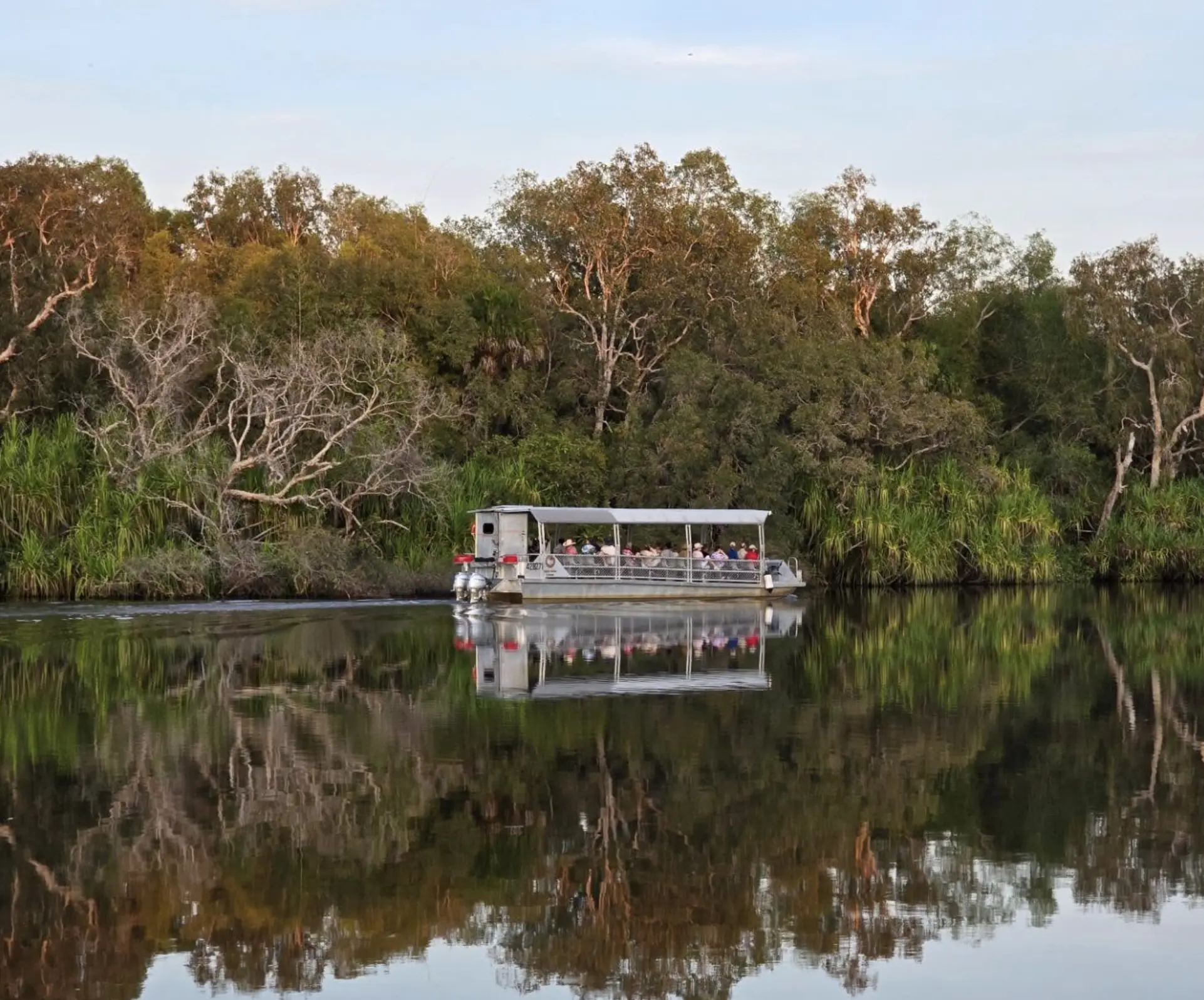
Kakadu is a natural wonder, a chance to see the balance of life in one of Australia’s most diverse regions. By respecting the park and following the rules you can have an adventure and protect the old and amazing creatures.
FAQ
Are saltwater crocodiles active during the dry season?
Yes, saltwater crocodiles are active all year round. During the dry season, they are more concentrated in permanent waterholes and other waterways.
Can I swim in Kakadu National Park?
Swimming is only allowed in designated areas, such as Gunlom and Maguk plunge pools. Follow crocodile warning signs and park staff advice.
Are there venomous snakes in Kakadu?
Yes, Kakadu has venomous snakes, including the water python and death adder. Be aware, especially near dense vegetation or water.
What is being done about invasive species like cane toads?
Park managers are working with traditional owners to control invasive species, protect endemic species and reduce habitat loss from toxic amphibians like cane toads.
When is the best time to visit Kakadu to avoid wildlife?
The dry season is generally safer to visit Kakadu as the water is lower and animal activity is more predictable. But each season has its own wildlife opportunities.

